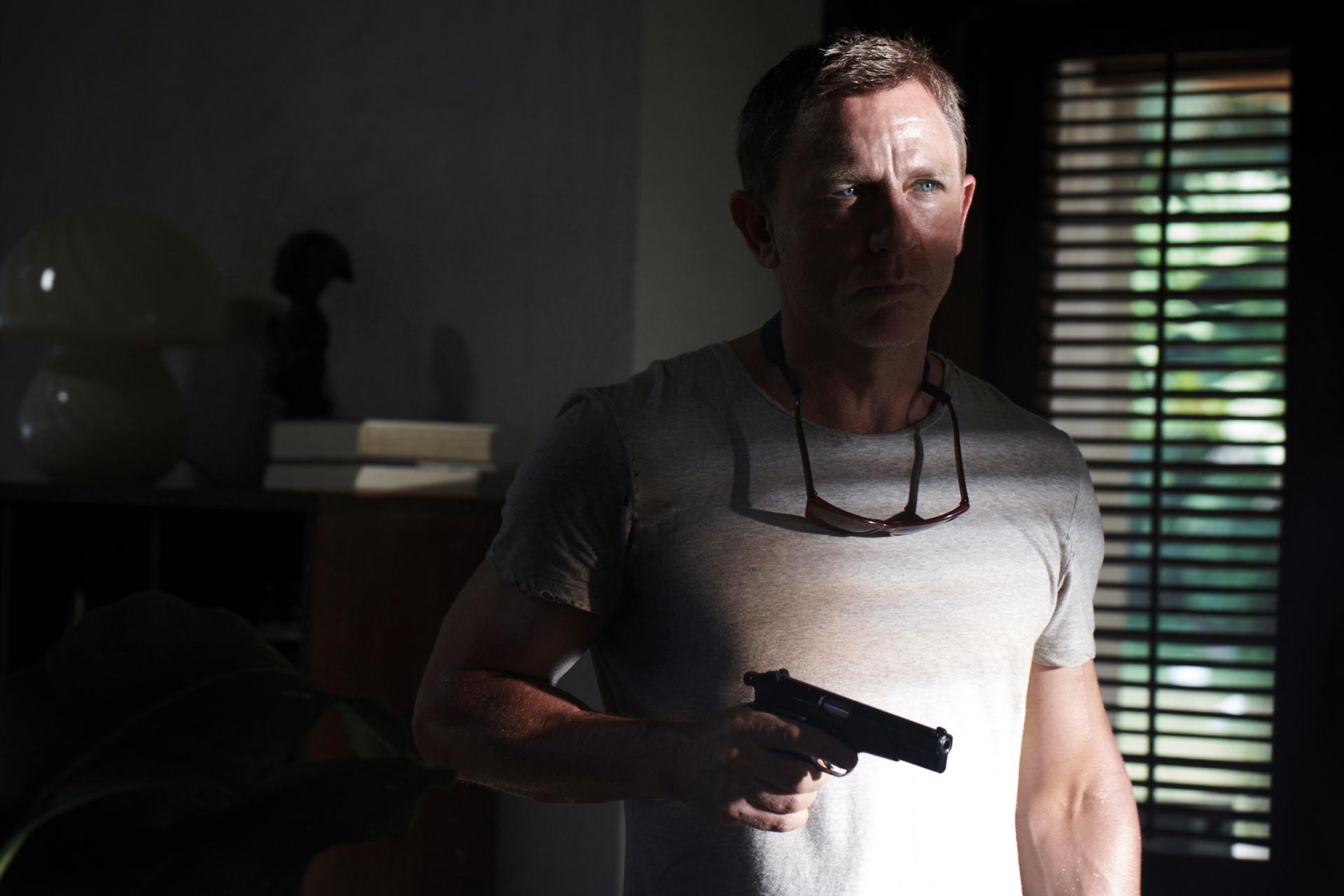Over the course of 25 films, James Bond movies evolved into their purest form — or maybe the word is “devolved.” Eon Productions, founded 59 years ago to make Dr. No, came to believe that the appeal of the series was based on the flashy cars, expensive watches, and other signifiers of wealth and class surrounding the posh secret agent. Bond became a brand, and the films little more than extended commercials for luxury goods, punctuated by extraordinarily expensive stunt sequences. Ian Fleming’s marquee character ceased to be a hard-boiled hero and became a moving mannequin for expensive suits. The tendency deepened as the Cold War waned, and the international spy game lost its capitalist vs. communist stakes. Bond was a violent solution looking for a problem. Remember 10 films ago, in The Living Daylights, when he went to Afghanistan and fought with the Mujahideen, aka the Taliban? Good times …
And then there’s the misogyny. Commander Bond is a love ’em and leave ’em sailor at heart, but his manly charms, integral to early appearances like From Russia With Love, curdled into something ugly. The exception in the canon is On Her Majesty’s Secret Service, where George Lazenby, in his only outing as Bond, was paired with the great Diana Rigg as Tracy, an underworld princess depicted as his equal. They marry, and when she is killed at the end of the film by a bullet meant for Bond, he cries. The film was a flop, and Lazenby lost the job. In the next film, 1971’s Diamonds Are Forever, Bond can barely hide his contempt for women.

But even as their relevance waned, the movies became more lavish and more expensive, until, in the 21st century, Eon Productions is eating up a significant chunk of British film financing. No Time to Die, the latest installment, is one of the most expensive films ever produced, costing an estimated $250 million to make, and at least another $100 million to market. Daniel Craig, Bond since 2006’s Casino Royale, is retiring, and he and True Detective director Cary Joji Fukunaga seem to have decided to try something different: What if we used all that money to make a good movie?
From the trademark cold opening, it’s clear that this is a different kind of Bond flick. Instead of immediately throwing us into the middle of an action sequence, it’s a gauzy flashback from someone who isn’t even Bond. Madeleine Swann (Leá Seydoux), who eloped with Bond at the end of Spectre, remembers the day an assassin came to kill her father, a capo in Ernst Blofeld (Christoph Waltz)’s criminal syndicate. The revelation of Madeleine’s parentage — which comes in the middle of a spectacular motorcycle chase through the Italian countryside — ruins the couple’s honeymoon.
Five years later, Bond is retired, spending his time drinking on the beach of his home in Jamaica. When an advanced biological weapon is stolen from a secret lab in London, the new 007, Nomi (Lashana Lynch) a Black woman who loves to rock some ’80s Grace Jones sunglasses, is dispatched by M (Ralph Fiennes) to retrieve it on the down-low. When the CIA gets wind of the situation, Bond’s old buddy Felix Leiter (Jeffrey Wright) knows who to call. When it comes to chasing madmen with WMDs, nobody does it better. He arrives at Bond’s doorstep to recruit him with a Trumpite politico named Ash (Billy Magnussen) in tow. Bond immediately pegs Ash as a bad guy (“He smiles too much.”) but agrees to help out anyway.

Naturally, Blofeld, who is still running SPECTRE from inside his Hannibal Lecter cage, is responsible for the heist. But that’s just the first twist in No Time to Die’s plot. The screenplay, credited to four writers, manages to fit in both character-building scenes and a finale designed around a raid on a secret supervillain lair. Fukunaga plays with expectations by setting up a rookie CIA agent, played by Ana de Armas, as a ditzy female stereotype before revealing her to be a competent operative. Instead of seducing her, Bond toasts her murderous prowess with expensive whiskey. It’s all surprisingly coherent and self-aware for a Bond movie.
Fukunaga gives the supporting cast great moments, like Wright imbuing Felix and Bond with genuine friendship, and Fiennes as the conflicted, alcoholic spymaster. Craig, who has shown his chops in Logan Lucky and Knives Out, delivers the best performance of his career. Sure, the old hero coming out of retirement for one last job is a cliché, but when the execution is this good, it doesn’t matter. You can take a guy out of MI6, but you can’t take the spy out of the guy.

